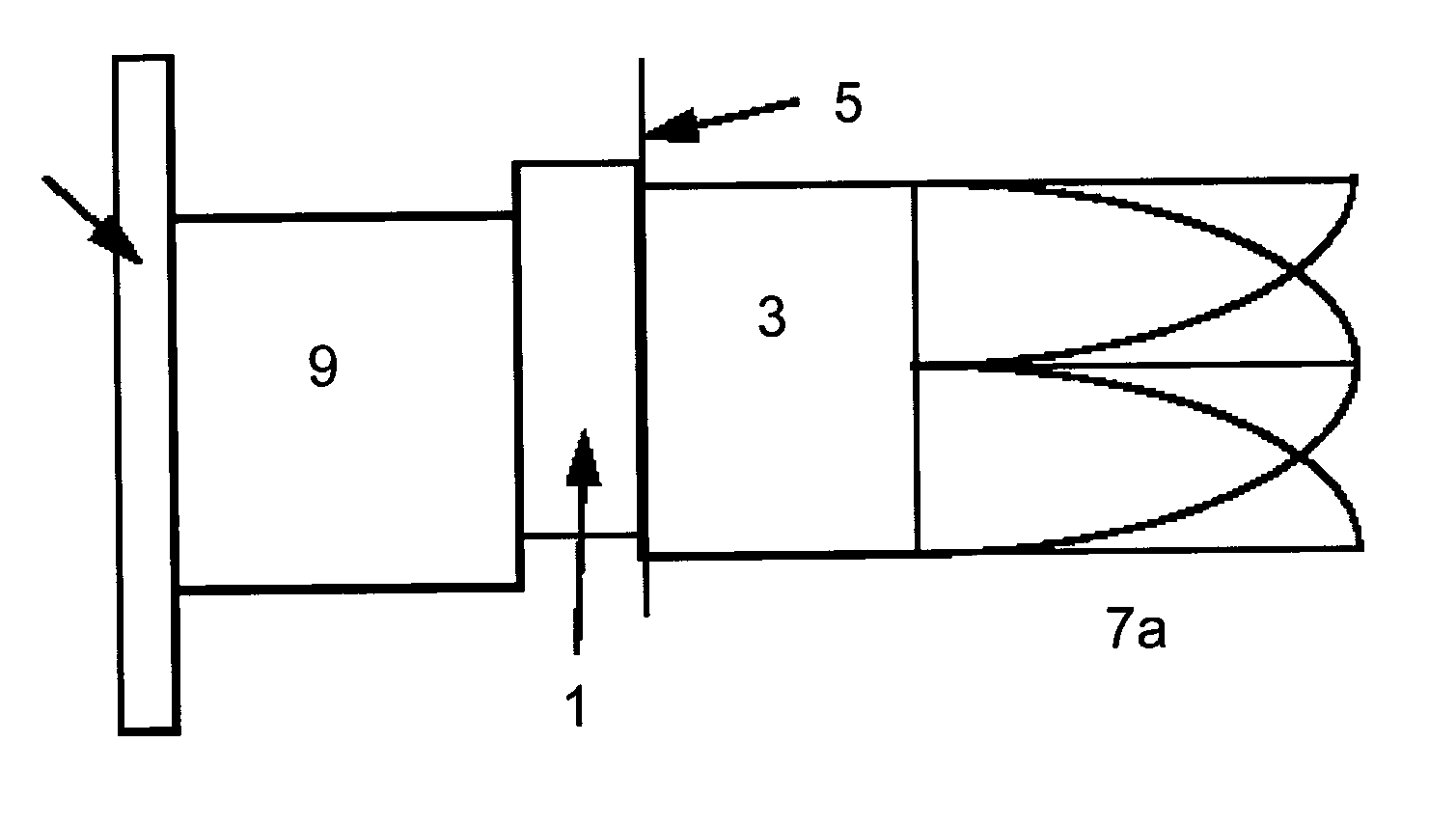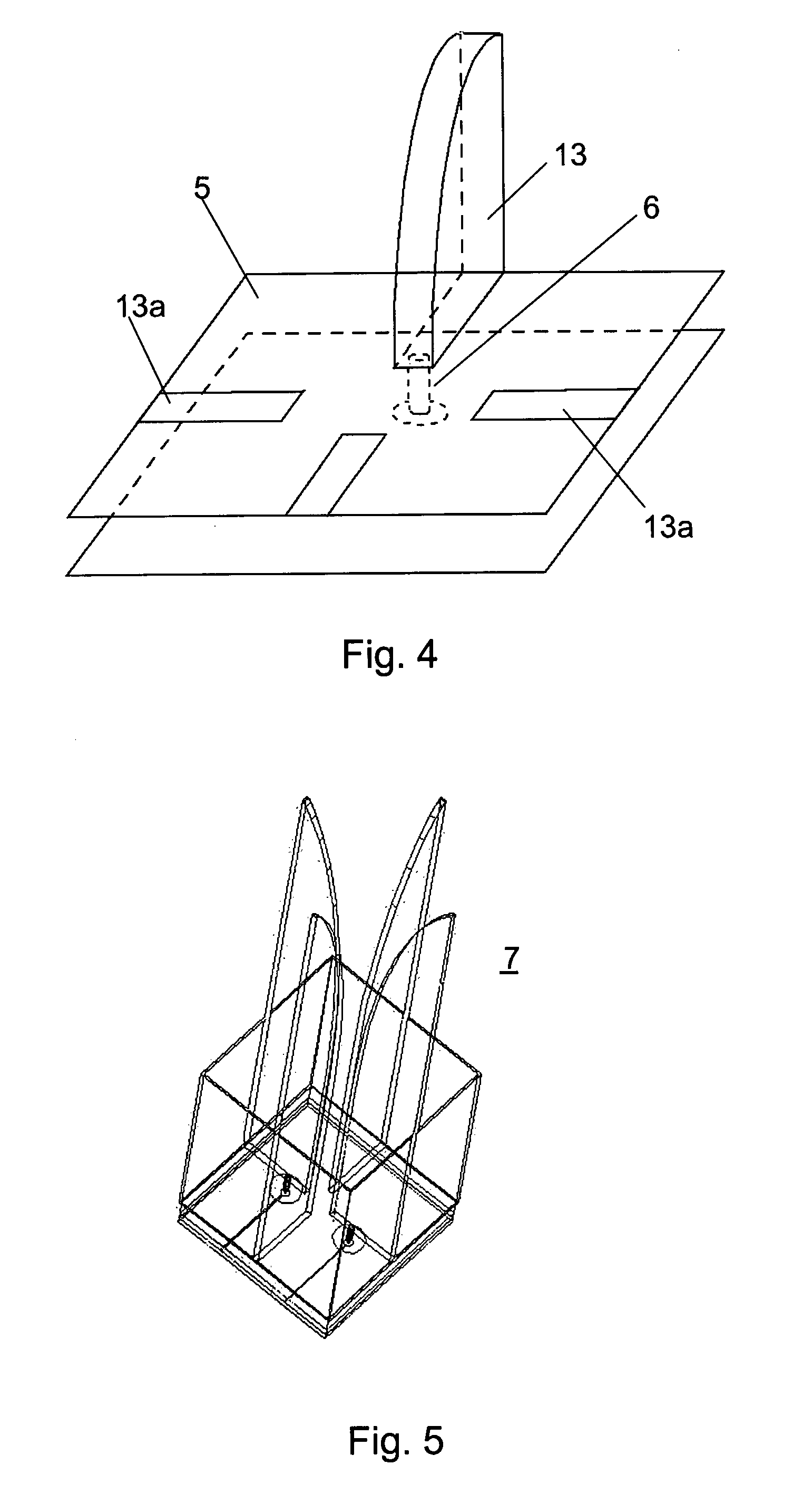Wave-Guide-Notch Antenna
a technology of waveguides and antennas, applied in the direction of antennas, slot antennas, basic electric elements, etc., can solve the problems of increasing complexity, e.g. manufacturing, and the dielectrics are often too heavy to be considered for large array antennas
- Summary
- Abstract
- Description
- Claims
- Application Information
AI Technical Summary
Problems solved by technology
Method used
Image
Examples
Embodiment Construction
[0027] An embodiment of the invention consists of a feed section 1 constituting a strip-line section or a probe section, where two (or more) input transmission lines 2 and / or probes 6 are arranged so that e.g. one linear and one circular polarisation is transmitted (or received) depending on how the input transmission lines 2 are excited. The feed section 1 transfers the strip-line wave or the probe wave to a wave-guide mode (and vice versa), of a ridged wave-guide section 3, a feed / wave-guide interface, e.g. in the form of crossed slots. The wave-guide mode finally enters the tapered notch section 7, which due to its TEM character gradually adjusts the field towards free-space conditions (Z0≈377 ohms) outside the antenna. (Also see FIG. 2, FIG. 3a and FIG. 3b).
[0028] Thus, a feed section 1 may consist of a strip-line section with at least one hybrid feeding the crossed-slot feed / wave-guide interface aperture. In another embodiment the feed section is realised using longitudinal pr...
PUM
 Login to View More
Login to View More Abstract
Description
Claims
Application Information
 Login to View More
Login to View More - R&D
- Intellectual Property
- Life Sciences
- Materials
- Tech Scout
- Unparalleled Data Quality
- Higher Quality Content
- 60% Fewer Hallucinations
Browse by: Latest US Patents, China's latest patents, Technical Efficacy Thesaurus, Application Domain, Technology Topic, Popular Technical Reports.
© 2025 PatSnap. All rights reserved.Legal|Privacy policy|Modern Slavery Act Transparency Statement|Sitemap|About US| Contact US: help@patsnap.com



